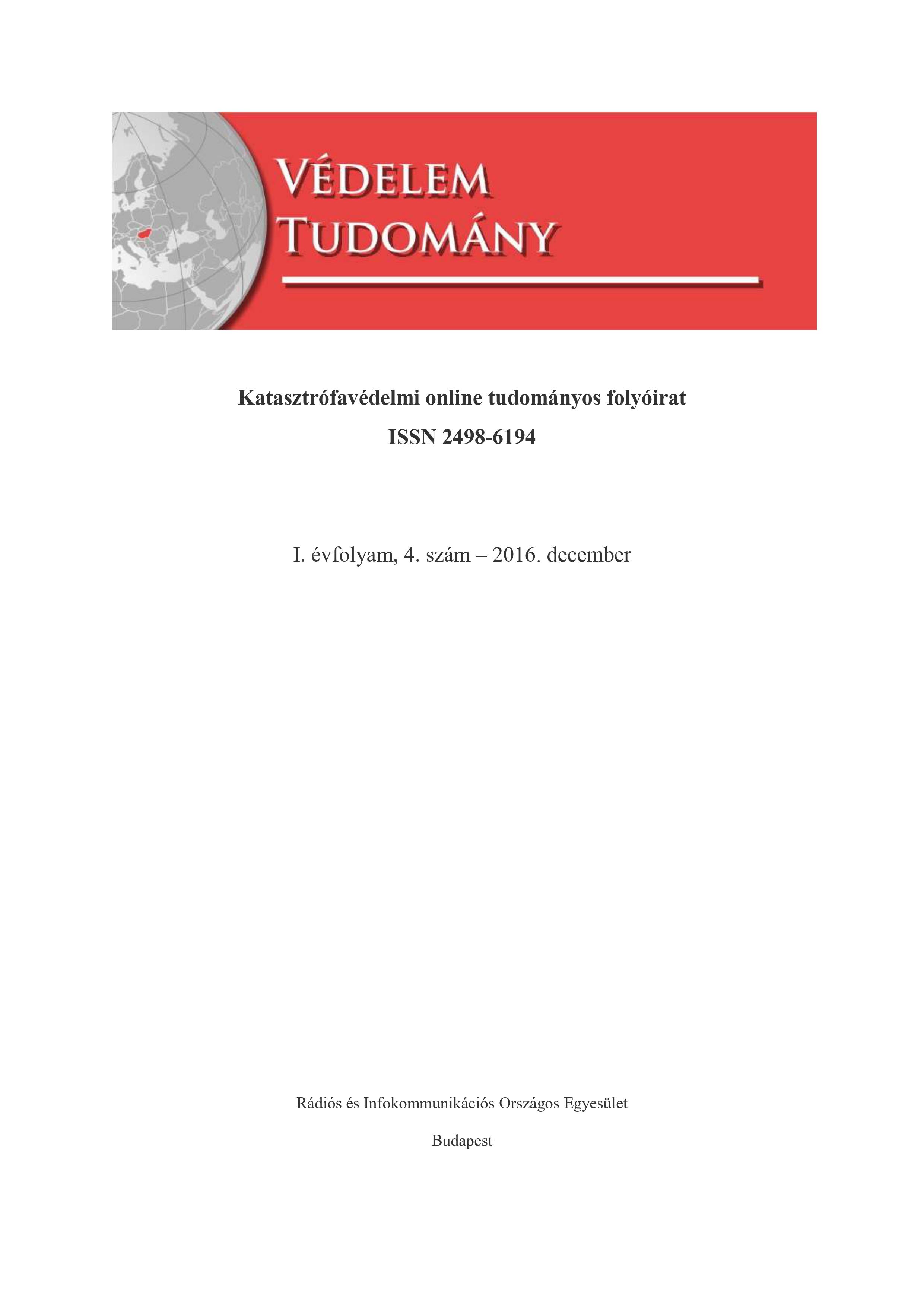Effects of actively used passive fire protection systems in the life cycle of buildings fire protection
Abstract
The complex needs of the buildings in the XXI. century, the constantly renewed technical solutions, and the dynamic variable use of the buildings lay the fire safety of the buildings on new foundations. The size (height, floor area, quantity of people, etc.), the design, the use of the buildings determines the entire life cycle of the building the risks involved in the building – human – fire interactions. The innovative fire protection solutions based on evaluative, analytical methods of exact theories, wich based on technical approaches distinguish two great defensive characters: active and passive fire protection systems. We can identify equilibrium situations in the life cycle of a building, in the ever-changing fire situations depend on the risks and fire protection evolvings, wich ensure long-term sustainable security. In the article I describe the protection features of the actively used passive fire protection, wich functions on the principle of the perception, processing and broadcast of information, wich ensure the most effective solutions to protect our contemporary buildings and our modern life.
References
Turning Torso, Malmö, építész Santiago Calatrava, http://www.calatrava.com/projects/turning-torso-malmoe.html, letöltés dátuma: 2016.11. 21. (1. ábra)
COCO Grove at Grand Bay, Miami, építész Bjarke Ingels, http://www.big.dk/#projects-coco , letöltés dátuma: 2016. 11. 21. (2. ábra)
Bérczi L.: A tűzvédelem a katasztrófavédelem rendszerében, Új Magyar Közigazgatás 5: (6) pp. 2-8.
Beda L.: Gondolatok az épületek tűzbiztonságáról, Magyar Építőipar, 2011 (3) pp. 94-98.
Bérczi L.: A tűzoltástaktika megújulása, Védelem - Katasztrófa- Tűz- és Polgári Védelmi Szemle 21 (2) pp. 51-52. (2014)
Érces G. – Restás Á.: Disaster Management in Fire Protection View: Building Life Cicle Assessment in Hungary In.: 11 th International Conference on "Environmental Legislation, Safety Engineering and Disaster Management" Elsedima: Building Disaster Resilience in a Changing Word 199 p., ISBN:978-606-93873-1-3
Országos Tűzvédelmi Szabályzat VI. fejezet: Tűzterjedés elleni védelem - 54/2014. (XII. 5.) BM rendelet
Országos Tűzvédelmi Szabályzat 3. melléklet 1. táblázat - 54/2014. (XII. 5.) BM rendelet
Országos Tűzvédelmi Szabályzat 14. melléklet táblázat - 54/2014. (XII. 5.) BM rendelet
Tűzszakaszok elemzése (lakó és közösségi funkció) – készítette a szerző (3. ábra)
Tűzszakaszok elemzése (tárolási és ipari funkció) – készítette a szerző (4. ábra)
Beda L.: Tűzmodellezés, tűzkockázat elemzés, Szent István Egyetem YMMFK, 1999.
Simonovits A.: Bevezetés a játékelméletbe, BME, Matematikai Intézet egyetemi segédlet (2007) MTA Közgazdaságtudományi Kutatóközpont
Nash J. F.: Non-cooperative games, Kuhn (1997) 14-26. pp.
Restás Á.: The Examination of the Economical Effectiveness of Forest Fire Suppression by Using Theoretical Fire Spread Models, Academic and Applied Research in Military and Public Management science 15 (1) pp. 85-92. (2016)
Restás Á.: Decision Making on the Spot, Proceedings of the 8th International Scientific Conference Wood and Fire Safety. Konferencia helye, ideje: Strbske Pleso, Szlovákia, 2016.05.08-2016.05.12. Zilina: EDIS Zilina University Publishers, 2016. pp. 277-286., ISBN:978-80-554-1201-6
Restás Á.: Time Pressure and its Effect Managing Emergency Situations, International Conference “SAFETY OF THE FUTURE” Human – Environment – Infrastructure. Konferencia helye, ideje: Varsó, Lengyelország, 2016.04.21 Paper W SGSP H14.
Bérczi L.: Structure, organization and duties of fire services in Hungary, Védelem Tudomány: Katasztrófavédelmi Online Tudományos Folyóirat I. (2) pp. 3-18. (2016)
Ramachandran G.: Informative Fire Warning Systems, Fire Technology, 27, 1, 1991 pp. 66-81.
Érces G. – Restás Á.: Infocommunication Based Development Opportunities in the System of Complex Fire Protection, In: Branko Savić, Verica Milanko, Mirjana Laban, Eva Mračkova, Restás Ágoston, Branka Petrović (szerk.) Book of Preceedings: МЕЂУНАРОДНА НАУЧНА КОНФЕРЕНЦИЈА БЕЗБЕДНОСНИ ИНЖЕЊЕРИНГ. 530 p., ISBN:978-86-6211-106-7
Haig Zs.-Kovács L.-Munk S.-Ványa L., Szerk.: Kovács L., Tózsa I.: Az infokommunikációs technológia hatása a hadtudományokra, Budapest: Nemzeti Közszolgálati Egyetem, 173 p.




